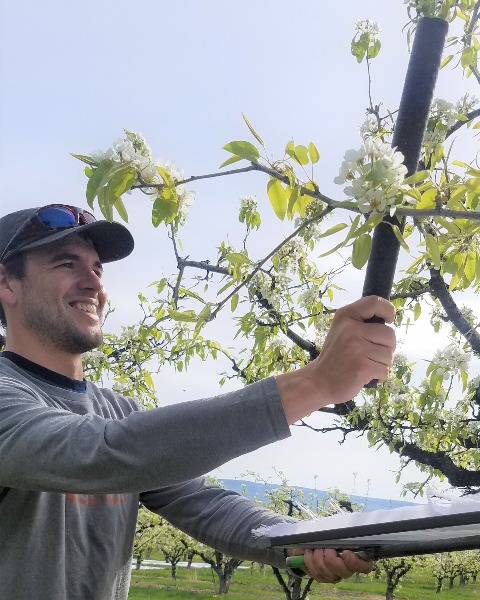Plant-Insect Ecosystems
10-Minute Paper
Pear psylla: A posterchild for IPM, maybe

Louis B. Nottingham
Research Assistant Professor
Washington State University
Wenatchee, Washington
Presenting Author(s)
Since the introduction of pear psylla, Cacopsylla pyricola, into Washington State in the 1940’s, it has remained one of the most expensive and poorly managed pests in pear orchards. Pear psylla is technically a secondary (i.e., induced) pest, but it has become a primary pest in severe regions such as Wenatchee WA because areawide populations exceed levels that natural enemies can control. On average, growers spray 12-15 insecticides costing $1,500 per acre per season, while achieving marginal to poor results. Aggressive spray programs control the first generation of psylla in the spring, but also disrupt biological control leading to late season outbreaks. Fruit injury ranges from minor to severe, but more importantly, psylla populations fester in orchards after harvest and into overwintering without suppression from natural enemies. The following year, growers are faced with enormous psylla populations, and the cycle repeats. The goal of our research is to incorporate various IPM techniques, including cultural, chemical, and biological control, to suppress psylla through the early season until natural enemies establish. We are using a hybrid approach involving pest thresholds and phenology models. Management techniques will target specific life stages based on a pear psylla degree day model, while in-field sampling thresholds will determine if certain techniques are necessary at strategic timings. Models, sampling thresholds, and corresponding recommendations will be broadcasted via WSU’s online Decision Aid System (DAS.org). This talk will address our successes, setbacks, and vision for the future of pear IPM.

